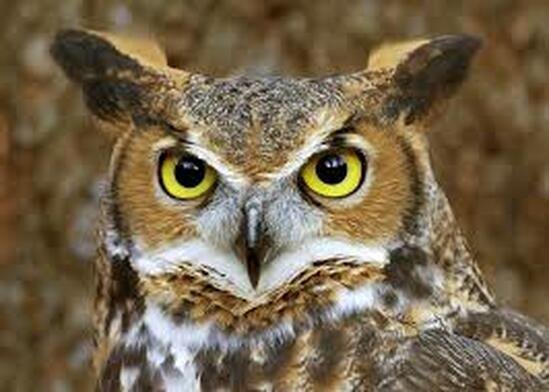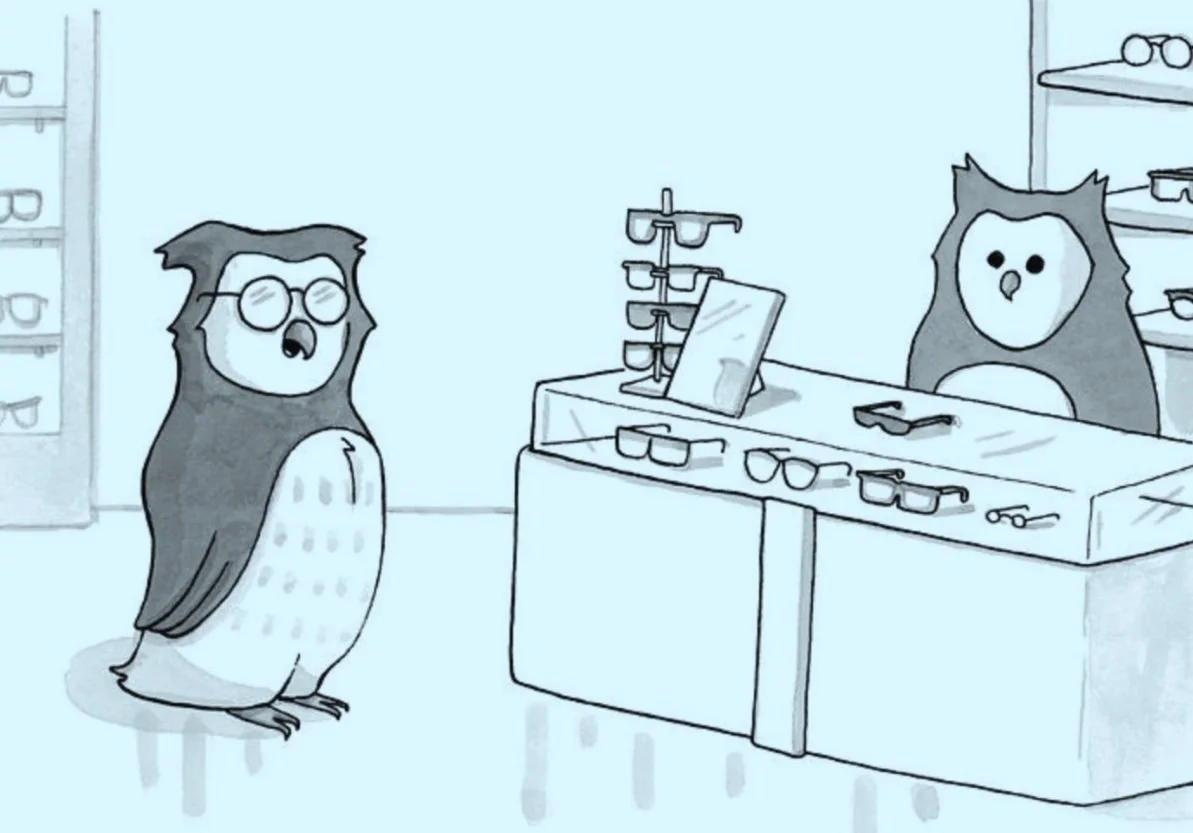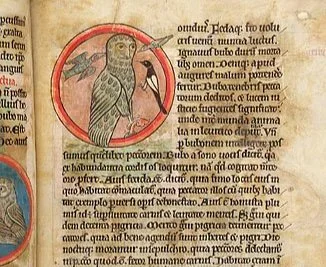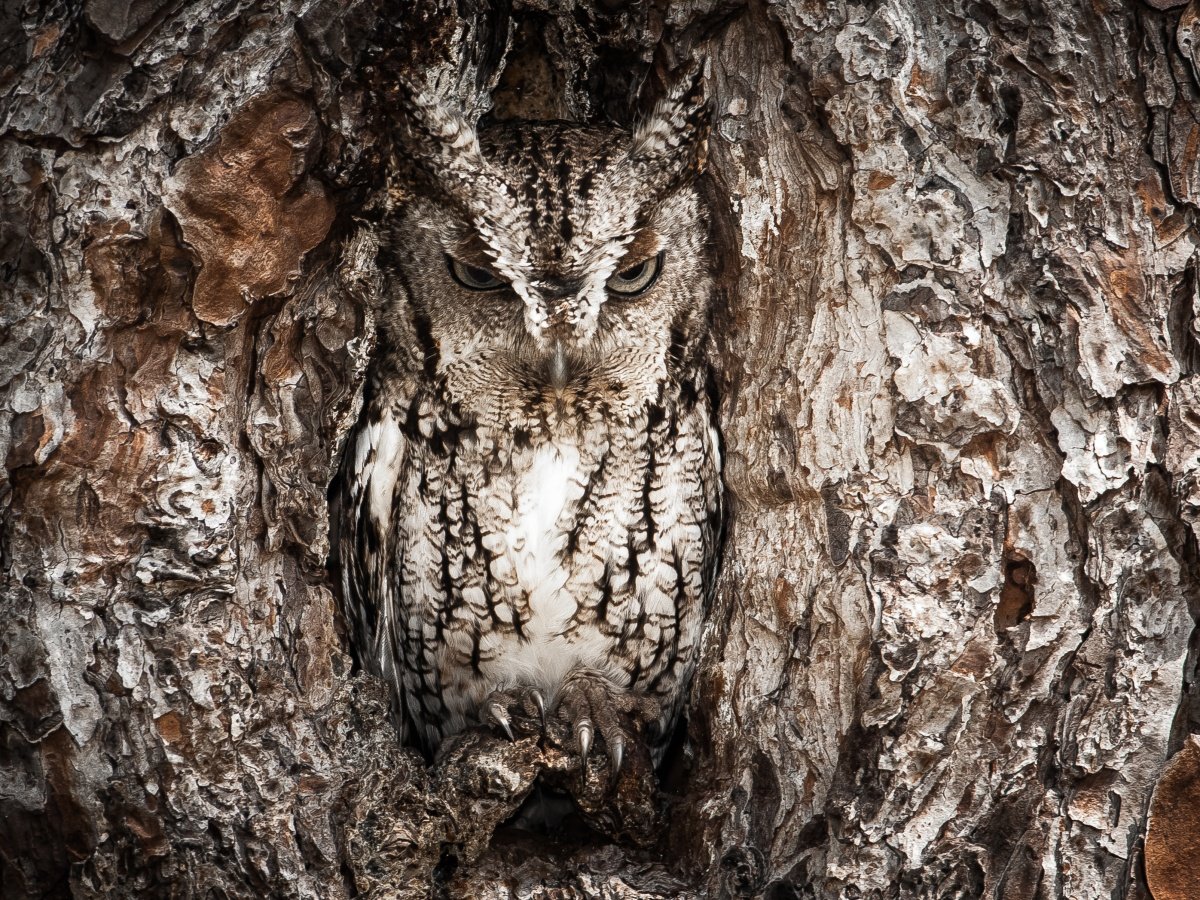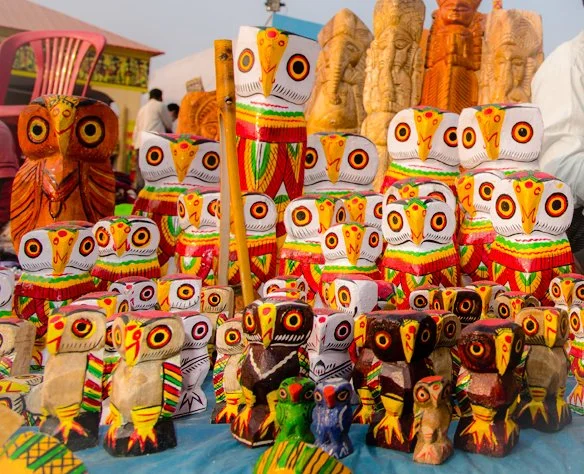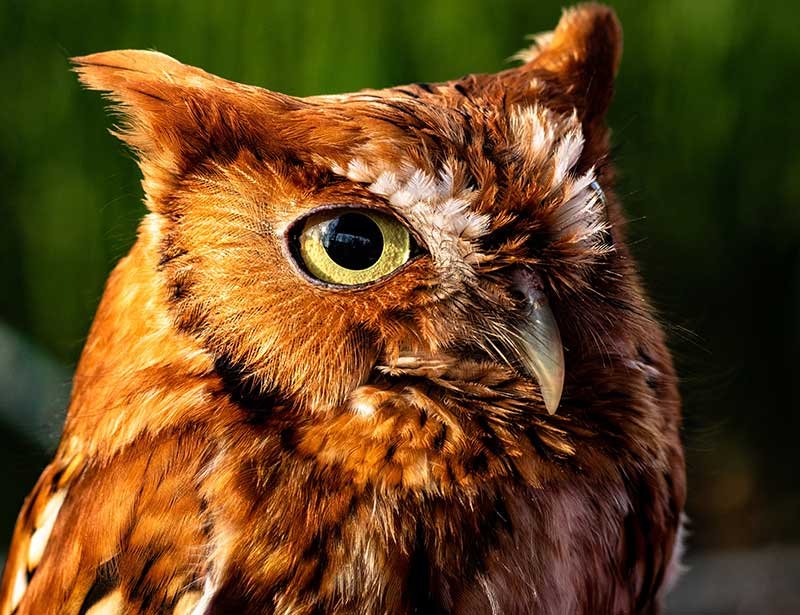By The Landlord
“Then nightly sings the staring owl,
Tu-whit;
Tu-who, a merry note.” – William Shakespeare, Love's Labour's Lost
“The clamorous owl, that nightly hoots and wonders
At our quaint spirits.” – William Shakespeare, A Midsummer Night's Dream
“The Roman senate, when within
The city walls an owl was seen,
Did cause their clergy, with lustrations …
The round-fac'd prodigy t' avert,
From doing town or country hurt.” – Samuel Butler, Hudibras, Part II
“O you virtuous owle,
The wise Minerva's only fowle.” – Sir Philip Sidney, A Remedy for Love
“Have you ever
Stared into the owl's eyes? They blink slow, then burn:
Burn gold in the dark inner core of the snow-shrouded cedar.” – Robert Penn Warren
“The owls are not what they seem.” – Major Briggs, Twin Peaks
A huge Eurasian eagle owl once landed on my arm. It clutched, silently, a whopping two feet tall, massive amber eyes staring back at me like fire. Its otherworldly, fluffy facial disc face was tawny-buff speckled, surrounded with silky, white, black and brown feathers and pointy, comically angled ears. It shifted its surprising lightweightedness with gripping talons, and pointed a hawk-like beak that could probably rip my face off. Fortunately though, it didn’t, looking at me with an expression of comically stern curiosity, and even, when I plucked up courage to stroke the side of its head, it leant into my hand, like a cat, and in that oddball, beaky way, almost seemed to smile.
New friend: Eurasian eagle owl
This was in fact a rescue bird, but while entirely tame and safe, the experience was profound, exciting, tingling and just a little bit frightening. What better qualities then for the subject of song? A thing of the night, mythical, mysterious, silent, deadly, all-seeing, omniscient? So then, this week then we turn our musical heads, at least 270 degrees, as that’s what owls can do, towards any song treatment of this bizarre and wondrous bird, ideally as the central subject, or at least holding a prominent moment in the lyrics. The owl could also be used metaphorically, ascribed to human behaviour. An additional element could be songs that include the call of the owl as part of the music. Either way, as ever, quotes and justifications are gratefully received with any song nominations, and what qualities the owl brings or role it plays.
After last week’s topic of eyewear, particularly glasses, it seems a somehow appropriate follow-on, at least in the cliched anthropomorphic portrayal of the wise, learned, librarian-ish owl. But owls of course have excellent vision, and for example, a northern hawk owl can see a vole or mouse as far as half a mile away, so no self-respecting owl would be seen in spectacles, would they?
“I’m looking for something less wise and more bad boy”
This topic could also be linked to another from earlier this year, songs about nightingales and the resulting beautiful playlists. The Owl and the Nightingale is a Middle English poem written, roughly between 1189 and 1216, in the form of a witty debate between the two title characters. The author is anonymous, but may, uncertainly have been a Nicholas of Guildford. It has been translated several times, the latest edition with an earthy northern beauty by current poet laureate Simon Armitage. The two birds argue about who is the best between them and what they represent, covering a wide variety of subjects outside the natural world itself, including love, religion and morality, but some of the most potent lines come when each criticises the other’s sonic presence. The Owl regards the Nightingale as a twittering showoff, the Nightingale sees the Owl as dour and dark. The Owl says the Nightingale’s voice “pipes like tinny reed/sliced from a thin unripened weed.” The Nightingale responds that the Owl “croon[s] a miserable and gloomy tune.”
The Middle English poem The Owl and the Nightingale
But how might the owl be portrayed in song? As well as the atmospheric or other associations, their call is spookily atmospheric but not every species fits that expected sound. The great horned owl, for example, has the classic hoot, but the northern hawk owl has more of a chirpy twitter. The eastern screech-owl whinnies like a horse, and saw-whet owls sound like, appropriately enough an old whetstone sharpening a saw. Not that tuneful, but certainly striking.
Culturally the owl seems be associated with a twilight otherworld of fear and the unknown. In the Kikuyu culture of Kenya, it is traditionally believed that owls were harbingers of death, and seeing or hearing one meant someone was going to die, or at least bring some seriously bad luck. The Aztecs and the Mayans also considered the owl a symbol of death and destruction, while further north, for the Apache and Seminole tribes, hearing owls hooting is linked to the many "bogeyman" figures and stories told to warn children to remain indoors at night and to be quiet, otherwise the owl may carry them away. That’s pretty useful for any parent. But stepping that fear factor up a little, the bony circles around an owl's eyes are said to comprise the fingernails of apparitional humans and be spirits of the dead, carrying messages from the grave.
Heard for lesser seen: eastern screech owl
Pliny the Elder also wrote of the owl as a harbinger of death, but the wisdom associated with the owl comes at least as early as Ancient Greece, associating owls with wisdom and vigilance, the goddess Athena, art and scholarship.
In Hinduism especially the eastern region of India, an owl is the vahana (mount) of the goddess Lakshmi, barn owl symbolising wealth, prosperity, wisdom, and good luck The Goddess Lakshmi, as well as the elephant and lion, is known to have a white barn owl as her vahana.
Wooden owls in West Bengal, India
In terms of companionship, the owl has been paired in literary and other storytelling with many other animals, anything from the wolf to the otter, but most famously, Edward Lear’s Owl and the Pussycat, with phrasing these days that could been regarded as more mischievous and specific than intended.
The Owl and the Pussy-cat went to sea
In a beautiful pea-green boat,
They took some honey, and plenty of money,
Wrapped up in a five-pound note
The Owl looked up to the stars above,
And sang to a small guitar,
"O lovely Pussy! O Pussy, my love,
What a beautiful Pussy you are,
You are,
You are!
What a beautiful Pussy you are!”
Owls and cats do seem to have a physical and behavioural association with their night-hunting, night-vision big, yellow-eyed, clawing independence and unpredictability. So could cats be perceived as owls on legs, or owls as cats with wings?
But a true life romance, or at least sprightly clawing friendship, does exist between cat and owl in Andalucia, Spain, between animals named Fum and Gebra, respectively translated as Smoke and Mist, the latter having been trained in falconry, the former also clearly hoping to learn to fly:
But owls are endlessly fascinating creatures on their own. Comprising more than 200 different species from the truest evolved Strigidae family, but also the Tytonidae, which includes the barn owl, they come in many sizes and forms, mostly all nocturnal, sharing binocular vision and feathers adapted for silent flight, and ranging from the tiny elf owl to the largest the Eurasian eagle-owl and Blakiston's fish owl. One particular exception is the more daytime active burrowing owl. It lacks ear tufts, has white eyebrows and a white "chin" patch which they expand and display at times such as a bobbing of the head when agitated or excited.
Most owls are solitary and nocturnal, but burrowing owls are active in daytime and more sociable
Owls’ sense of mystery perhaps partly because they are far more likely to be heard than seen. Some species have excellent camouflage, from the woodland hiding tawny owl or mottled wood-owl to the wintry environment of the snowy owl. Here’s a further selection of calls.
This experiment shows why an owl can fly so quietly in comparison to other birds:
Here also is video containing extraordinary footage of various owl species, though you may prefer to watch with the sound turned down rather than listen to the commentary.
Owls also possess many other oddities, such as asymmetrical ears at different heights on their heads to pinpoint the location of sounds in multiple dimensions.
But now it’s time to tune in our own acute hearing with song suggestions, and acutely listening to your nominations, let’s welcome back behind the bar the wise old ears of longtime regular Maki. Deadline is 11pm on Monday UK time, for playlists published next week. Hopefully it’ll be a hoot.
New to comment? It is quick and easy. You just need to login to Disqus once. All is explained in About/FAQs ...
Fancy a turn behind the pumps at The Song Bar? Care to choose a playlist from songs nominated and write something about it? Then feel free to contact The Song Bar here, or try the usual email address. Also please follow us social media: Song Bar Twitter, Song Bar Facebook. Song Bar YouTube, and Song Bar Instagram. Please subscribe, follow and share.
Song Bar is non-profit and is simply about sharing great music. We don’t do clickbait or advertisements. Please make any donation to help keep the Bar running:

